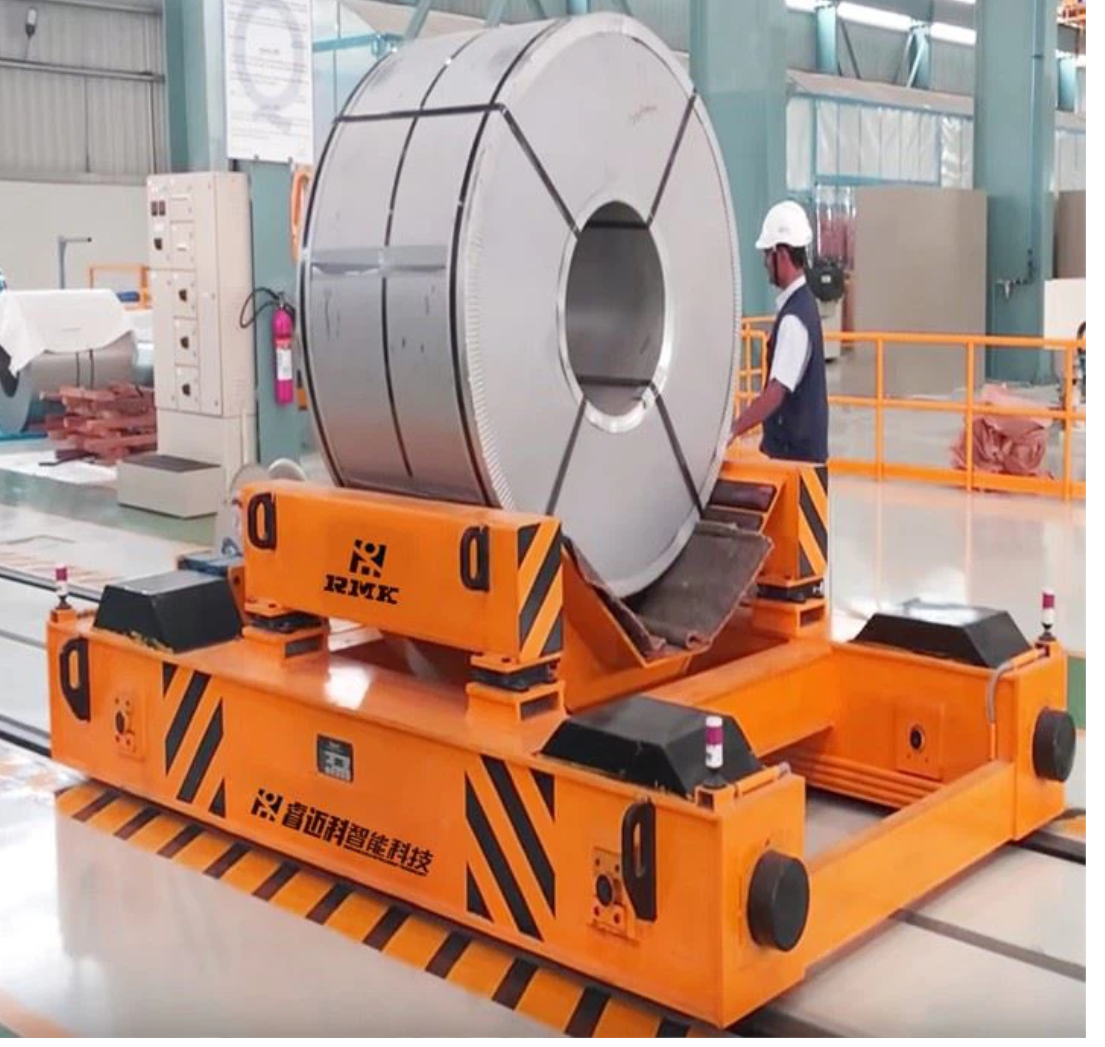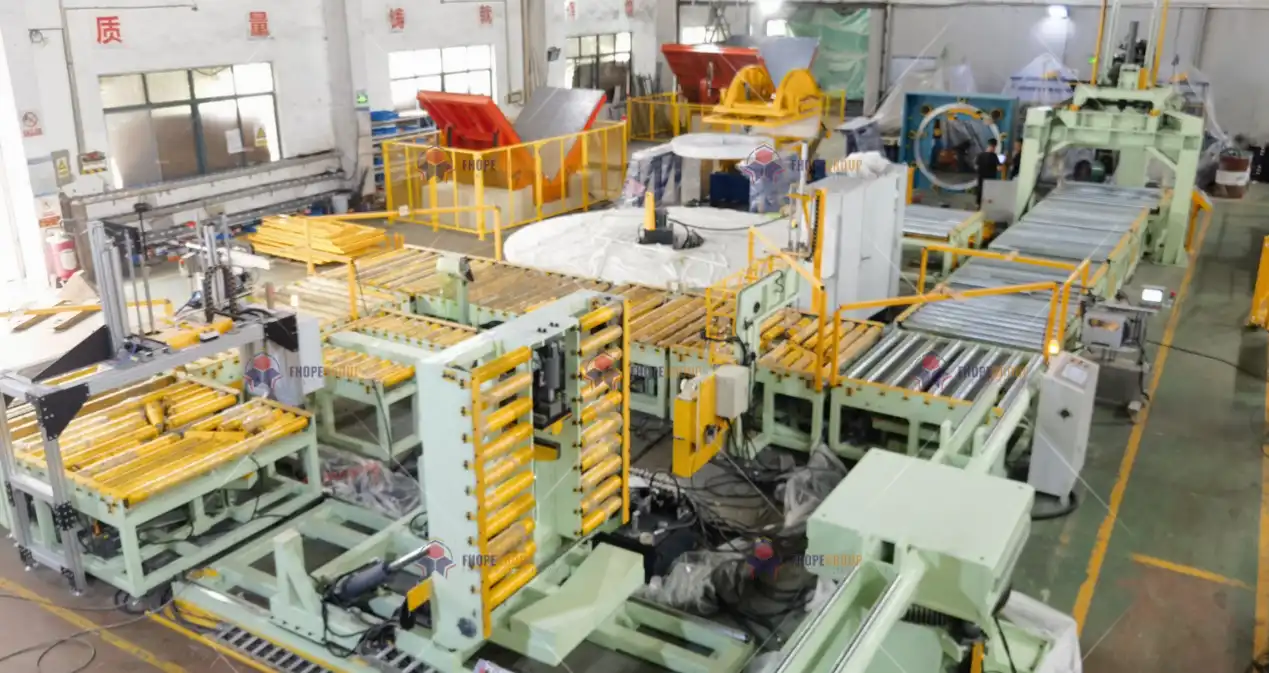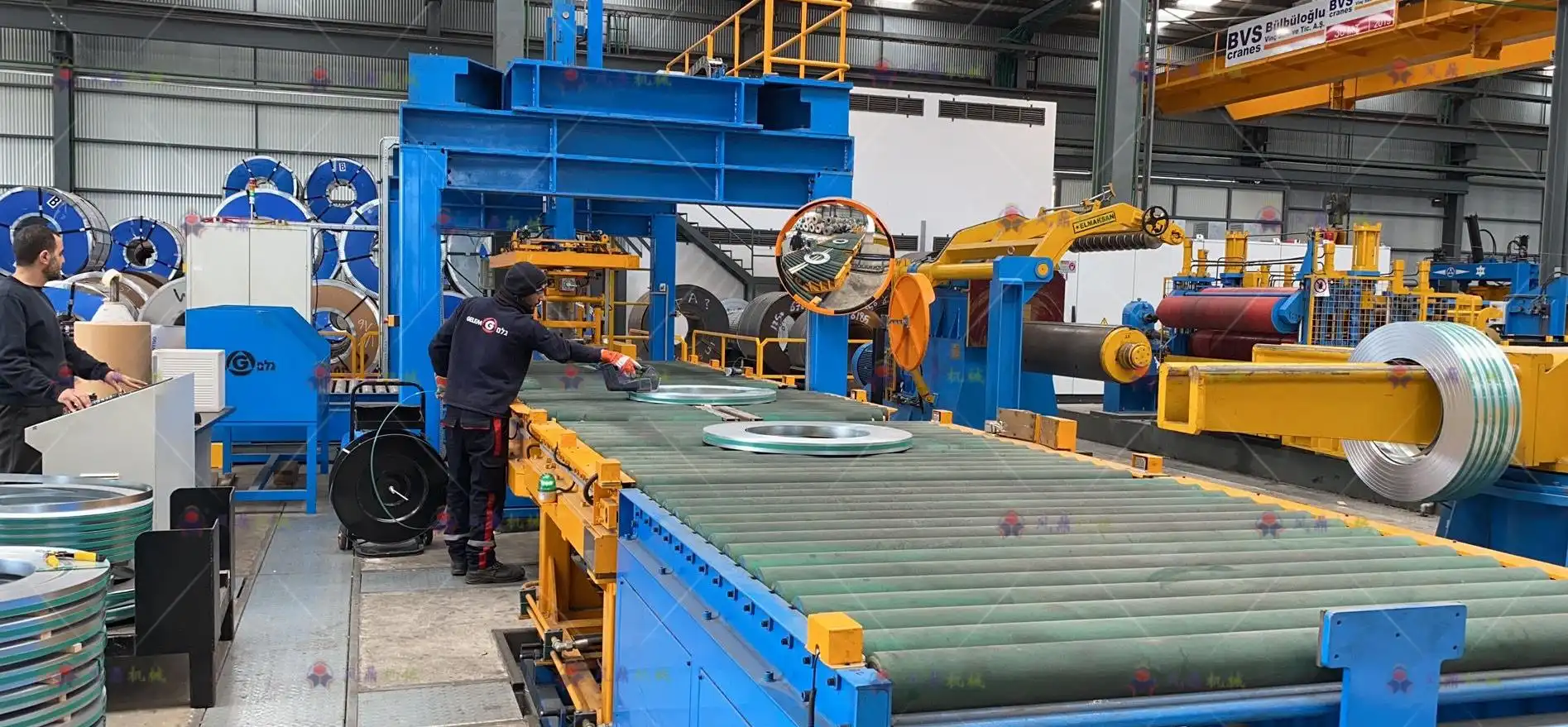The Benefits of IoT Integration in Steel Coil Packing Systems

Introduction
In today's competitive industrial landscape, achieving maximum efficiency, accuracy, and productivity is crucial. The integration of Internet of Things (IoT) technology represents a significant leap forward, transforming operations across sectors from manufacturing to logistics. By connecting devices, machines, and systems, IoT facilitates data exchange and automation previously unattainable. Within the steel industry, specifically in the complex process of packing steel coils, IoT integration is proving instrumental. This article details how incorporating IoT into steel coil packing systems enhances operational performance, improves safety protocols, and leads to considerable cost savings, supported by practical applications and benefits.
What is IoT and How Does It Function in Industrial Systems?
Understanding the Basics of IoT
The Internet of Things (IoT) refers to a network of physical objects—devices, vehicles, appliances, and other items—embedded with sensors, software, and network connectivity, enabling them to collect and exchange data. In an industrial context, often termed the Industrial Internet of Things (IIoT), this allows machinery and systems to communicate autonomously, gather operational data, and trigger real-time adjustments, enhancing visibility and control over processes like steel coil packaging.
The Role of IoT in Steel Coil Packing Systems
Within steel coil packing systems, IoT integration facilitates continuous monitoring and optimization of the entire operation. Sensors embedded within the packing line equipment track critical parameters such as coil dimensions (width, diameter), weight, wrapping material tension, strapping placement accuracy, and environmental factors like ambient temperature and humidity. This collected data streams to a central platform or cloud service for analysis. This analysis enables operators to make data-driven decisions, automate parameter adjustments for different coil types, and implement predictive maintenance strategies, thereby improving the overall equipment effectiveness (OEE).

Key Benefits of IoT Integration in Steel Coil Packing
1. Real-Time Monitoring for Enhanced Efficiency
A primary advantage of IoT integration is the capability for real-time monitoring across the packing line. IoT-enabled systems continuously gather and transmit data on various operational parameters. This constant stream allows operators to track key performance indicators (KPIs) such as packing cycle times, material consumption rates, and overall system throughput instantaneously.
How Real-Time Monitoring Improves Efficiency
Access to real-time data empowers operators to:
- Identify bottlenecks: Quickly pinpoint process slowdowns or inefficiencies and implement corrective measures without delay.
- Optimize packing parameters: Adjust settings like wrapping speed or strap tension based on live feedback, ensuring precise and secure packaging for each unique coil.
- Track material usage: Monitor the consumption of wrapping film, VCI paper, and strapping bands to prevent waste and optimize inventory, contributing to cost reduction.
By enabling continuous monitoring and dynamic adjustments, these systems operate closer to peak efficiency, resulting in faster packing cycles and significantly reduced operational downtime.
2. Predictive Maintenance and Reduced Downtime
Unplanned equipment downtime is a major operational hurdle in steel coil packing. Traditional maintenance schedules often react to failures. In contrast, IoT integration enables [predictive maintenance (PdM)], a proactive strategy using sensor data (e.g., vibration analysis, temperature monitoring, motor current signature analysis) to forecast potential equipment failures before they occur.
Benefits of Predictive Maintenance

- Minimized Downtime: By anticipating potential issues (like bearing wear or motor stress), maintenance can be scheduled during planned shutdowns, preventing unexpected and costly interruptions to the packing line.
- Extended Equipment Lifespan: Consistent monitoring of component health ensures timely servicing, mitigating excessive wear and tear and prolonging the operational life of critical packing machinery.
- Cost Savings: Proactive maintenance avoids expensive emergency repairs and reduces associated costs like lost production time and expedited parts shipping.
Predictive maintenance, powered by IoT data analytics, keeps the steel coil packing system running reliably, boosting overall productivity and throughput.
3. Improved Quality Control
Maintaining high quality standards is essential in steel coil packing, as inadequate packaging can result in coil damage during handling, transit, or storage. IoT technology facilitates automated quality checks at multiple stages of the packing process, verifying that each coil meets predefined packaging specifications.
How IoT Enhances Quality Control
- Automated Inspections: IoT sensors precisely measure parameters like wrapping film tension consistency, strap application accuracy (position and tightness), and material alignment. Vision systems can even detect surface imperfections or wrapping flaws, ensuring adherence to specifications and minimizing human error.
- Real-Time Alerts: If any measured parameter deviates from the acceptable range (e.g., insufficient strap tension), the system can instantly alert operators or even halt the process, allowing for immediate correction before the coil proceeds.
- Data-Driven Improvements: Analyzing historical quality data reveals trends and potential areas for process refinement. For instance, identifying recurring issues with specific coil dimensions allows operators to fine-tune machine settings for better consistency and quality output.
By enforcing consistency and precision in every packed coil, IoT technology significantly reduces the risk of product damage, leading to fewer customer claims and enhanced satisfaction.
4. Increased Safety and Reduced Risk

Safety Features Enabled by IoT
- Automated Handling: IoT-coordinated robotic systems and conveyors perform strenuous tasks like coil lifting, tilting, wrapping, and strapping, drastically reducing worker exposure to ergonomic risks and potential crush injuries.
- Environmental Monitoring: Sensors track workplace conditions (e.g., air quality, noise levels) and machine operating parameters (e.g., overheating components) that could pose safety risks. Abnormal readings trigger alerts for investigation.
- Safety Alerts and Interlocks: If sensors detect unsafe conditions, such as a misaligned coil entering a strapping station or excessive mechanical stress on a component, the system can initiate an automated emergency stop or issue clear warnings, preventing potential accidents.
Through automation of hazardous tasks and proactive hazard detection, IoT integration fosters a safer work environment, contributing to lower incident rates and improved regulatory compliance.
5. Data Analytics for Continuous Improvement
IoT systems generate a wealth of operational data from the steel coil packing process. This data, when analyzed effectively, becomes a powerful tool for continuous process improvement, enabling businesses to systematically optimize operations.
How Data Analytics Drives Improvement
- Historical Data Analysis: Examining performance trends over time (e.g., daily, weekly, monthly) helps identify recurring inefficiencies, benchmark performance, and track the impact of process changes.
- Customizable Reports: IoT platforms can generate detailed reports on KPIs such as OEE, material waste percentages, downtime causes, and energy consumption per coil. These reports provide managers with actionable insights for strategic decision-making.
- Artificial Intelligence (AI) Integration: Advanced systems leverage AI and Machine Learning (ML) to analyze complex data patterns. AI can provide predictive insights (e.g., forecasting material needs) or recommend optimal machine settings based on coil characteristics and desired outcomes, leading to automated process optimization.
Leveraging continuous data analysis empowers companies to remain agile, identify improvement opportunities, and enhance efficiency, quality, and cost-effectiveness within their packing operations.

6. Enhanced Supply Chain Visibility
A significant benefit of IoT integration is the potential for end-to-end supply chain visibility. IoT-connected devices within the packing system log each step, from wrapping initiation to final labeling and staging for shipment. This granular, real-time data is invaluable for logistics and supply chain managers.
How IoT Improves Supply Chain Management
- Real-Time Tracking: IoT sensors or tags attached to packed coils can enable real-time location tracking throughout the logistics network. This improves shipment monitoring, provides accurate estimated times of arrival (ETAs), and reduces the risk of lost or misplaced inventory.
- Inventory Management: Integrating IoT data with Warehouse Management Systems (WMS) and Enterprise Resource Planning (ERP) systems ensures accurate tracking of raw materials (packing supplies), work-in-progress (coils being packed), and finished goods. This minimizes stockouts and optimizes inventory levels.
- Customer Communication: Access to real-time tracking data allows suppliers to provide customers with proactive updates and accurate delivery information, enhancing transparency and strengthening customer relationships.
By offering greater transparency and control over the packing and shipping lifecycle, IoT integration helps optimize the supply chain, reduce logistical bottlenecks, and improve overall customer service levels.
7. Energy Efficiency and Sustainability
Sustainability is an increasingly important focus for heavy industries like steel. IoT-enabled steel coil packing systems can significantly contribute to environmental goals by reducing energy consumption and minimizing material waste.
Reducing Energy Consumption with IoT
- Energy Usage Monitoring: Granular energy monitoring at the machine or line level identifies high-consumption processes or equipment. This data enables targeted efforts to optimize machine settings or workflows for reduced power usage.
- Optimized Machine Performance: IoT ensures machines operate efficiently, avoiding energy waste from running under suboptimal conditions. Predictive maintenance also prevents energy spikes associated with failing components.
- Automated Shutdowns: Systems can be programmed to automatically power down machinery during idle periods (e.g., breaks, shift changes, or periods with no coil supply), substantially cutting energy consumption during non-productive times.
Reducing Waste in the Packing Process
- Material Optimization: Precise sensor measurements and automated controls ensure the optimal amount of wrapping film and strapping is applied based on coil size and requirements, preventing over-packaging and reducing material waste.
- Waste Tracking and Recycling: IoT systems can track consumable usage, helping identify opportunities to switch to more sustainable or recyclable materials or implement better waste segregation and recycling programs for used packaging materials.
Through improved energy efficiency and reduced material waste, IoT integration delivers both cost savings and tangible environmental benefits, aligning steel packing operations with corporate sustainability objectives.
8. Seamless Integration with Other Smart Technologies
A key strength of IoT is its ability to integrate with other advanced technologies like Artificial Intelligence (AI), Machine Learning (ML), robotics, and Manufacturing Execution Systems (MES), creating a cohesive, intelligent "smart factory" environment.
AI and Machine Learning Integration
- AI for Predictive Adjustments: AI algorithms analyzing real-time IoT data can automatically adjust machine parameters. For example, AI could optimize strap tension based on detected variations in coil density or ambient temperature to ensure package integrity under changing conditions.
- Machine Learning for Process Improvement: ML models can learn from historical data to identify subtle process inefficiencies or predict quality issues, providing actionable recommendations for continuous improvement beyond basic analytics.
Robotics in IoT-Enabled Systems
- Automated Material Handling: IoT coordinates the actions of robotic arms for tasks like coil loading/unloading, applying protective edge protectors, or palletizing finished coils, ensuring smooth interaction with other automated equipment on the line.
- Collaborative Robots (Cobots): In environments where full automation isn't feasible, IoT can manage cobots working safely alongside human operators, assisting with tasks requiring dexterity or inspection while ensuring operational safety through integrated sensors.
By combining IoT with AI, ML, and robotics, companies can build highly flexible, intelligent, and automated packing systems capable of adapting to dynamic production schedules and continuously optimizing performance.
9. Scalability and Future-Proofing
Investing in technology requires considering future growth and adaptability. IoT-enabled packing systems are inherently designed for scalability, allowing companies to expand capabilities or increase throughput as business demands evolve.
How IoT Ensures Scalability
- Modular Design: Many IoT packing solutions feature modular components. New sensors, automation modules (e.g., additional strapping heads), or inspection stations can often be added incrementally without requiring a complete system replacement.
- Cloud-Based Platforms: Utilizing cloud platforms for data storage and analysis provides inherent scalability. As data volumes grow with increased production, cloud resources can expand seamlessly without impacting system performance.
- Future-Proofing: The IoT ecosystem is constantly evolving. Adopting IoT provides a foundation for incorporating future technological advancements (e.g., new sensor types, improved AI algorithms) through software updates or hardware additions, keeping the system current.
The scalability and adaptability of IoT integration help future-proof steel coil packing operations, ensuring they remain efficient and competitive as technology and market demands change.
10. Cost Reduction and Return on Investment (ROI)
Ultimately, technology investments must demonstrate a clear financial benefit. IoT integration in steel coil packing systems drives cost reductions across multiple operational areas, typically yielding a strong return on investment (ROI).
Key Areas of Cost Reduction
- Reduced Labor Costs: Increased automation minimizes the need for manual labor in repetitive or hazardous packing tasks, leading to direct savings in wages, benefits, and training.
- Lower Maintenance Costs: Predictive maintenance significantly reduces expensive emergency repairs and associated downtime costs compared to reactive or purely preventive maintenance strategies.
- Minimized Material Waste: Optimized use of wrapping film, strapping, and other consumables directly lowers material purchasing costs and reduces disposal fees.
- Energy Savings: Improved energy efficiency through monitoring and automated controls translates directly into lower utility bills.
- Reduced Damage/Rework: Enhanced quality control minimizes coil damage during packing and transit, reducing costs associated with rework, scrap, and customer claims.
These combined cost savings often result in a compelling ROI, making IoT integration a strategically cost-effective solution for modernizing steel coil packing operations.

Conclusion
The integration of IoT technology into steel coil packing systems offers transformative benefits, substantially enhancing operational efficiency, bolstering safety measures, improving quality control, and driving cost-effectiveness. Key advantages range from real-time operational visibility and proactive predictive maintenance to optimized material usage and enhanced supply chain transparency. Furthermore, the inherent scalability of IoT solutions and their ability to integrate seamlessly with AI, ML, and robotics position businesses for future growth and technological advancements.
As the steel industry navigates demands for higher productivity, stricter quality standards, and increased sustainability, adopting IoT in packing systems is not merely an upgrade but a strategic imperative. It empowers organizations to achieve operational excellence, ensure long-term competitiveness, and deliver greater value and satisfaction to their customers. The future of steel coil packing is intrinsically linked to smart, connected systems, with IoT serving as the foundation for continuous improvement and innovation.